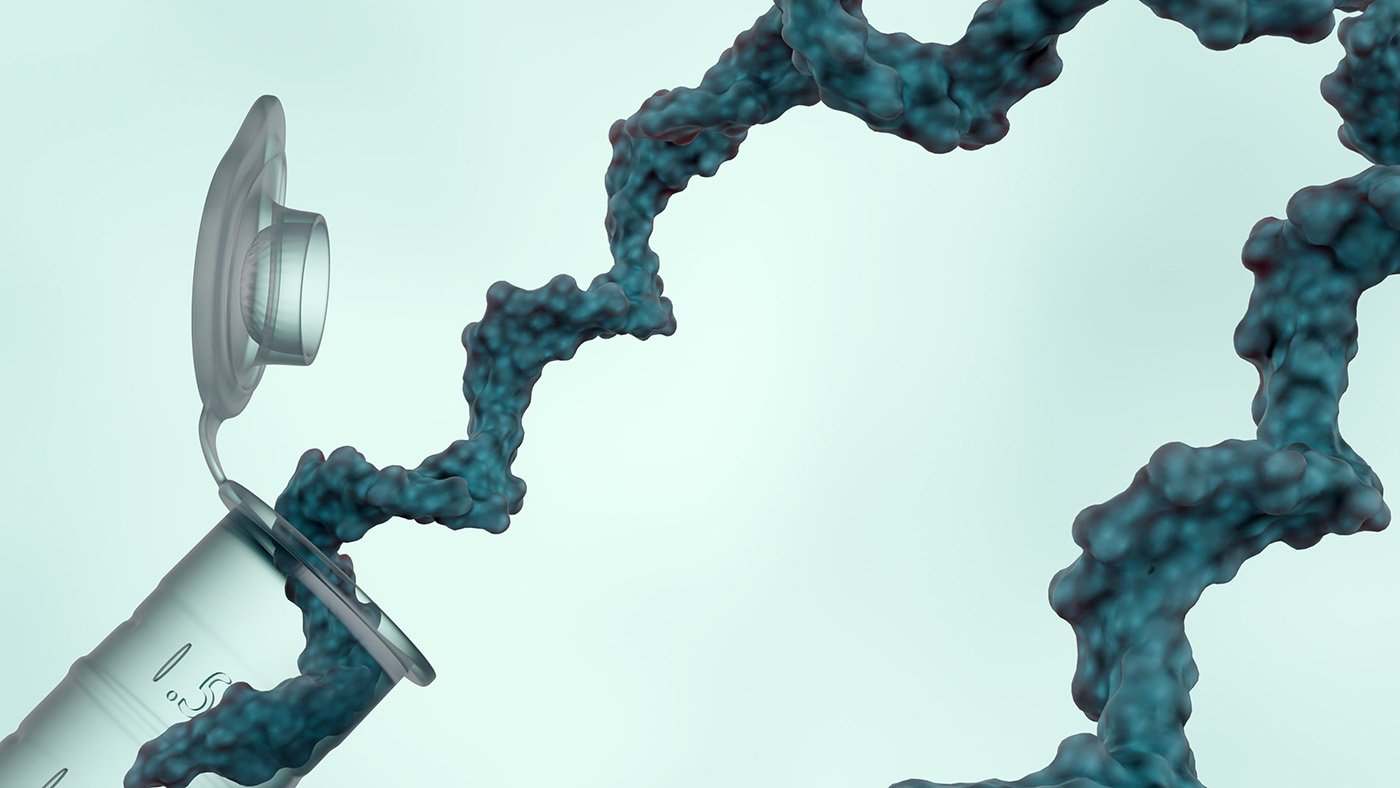Rheumatoid arthritis (RA) is a chronic, incurable disorder, so treatment focuses on managing the disease and controlling its progression. Although current treatments help control RA symptoms in most people, they cannot prevent the onset of RA or painful flare-ups. Researchers headed by teams at Kao Autoimmunity Institute and Division of Rheumatology, Cedars-Sinai Medical Center, and at the Department of Chemical and Nano Engineering, University of California San Diego, have developed immunomodulatory polymer nanoparticles—termed Agg-CLNP. Tests with human blood and in mice models with RA-like disease suggest Agg-CLNP could slow disease progression and reduce flare severity.
Co-senior and co-corresponding authors Nunzio Bottini, MD, PhD, Kao Autoimmunity Institute director, Nisarg J. Shah, PhD, associate professor, Chemical and Nano Engineering, and Aiiso Yufeng Li, Family Department of Chemical and Nano Engineering at the UC San Diego Jacobs School of Engineering, reported on their studies in ACS Central Science, in a paper titled “Immunomodulatory Nanoparticles Enable Combination Therapies To Enhance Disease Prevention and Flare Control in Rheumatoid Arthritis.” In their paper, the team concluded, “Our approach does not require cell manufacturing, avoids generalized immunosuppression, and could be formulated as an off-the-shelf nanoparticle formulation. Agg-CLNP have favorable features in terms of the cost of manufacturing and potential toxicity.”
For a person diagnosed with RA, their immune system attacks tissue that makes up the joints, causing inflammation, swelling and pain. As the disease progresses, serious cartilage and bone damage can occur if left uncontrolled. “Rheumatoid arthritis is a chronic autoimmune disorder characterized by persistent joint inflammation, often resulting in progressive cartilage and bone damage,” the authors explained. Disease-modifying anti-rheumatic drugs such as abatacept reduce disease activity and slow progression of symptoms, and can be effective, the team continued. “Disease-modifying antirheumatic drugs have notably advanced RA management and more than 50% of patients achieve the target for treatment (remission or low disease activity [LDA]) using the current regimens.”
However, many people taking DMARDs still experience symptom flare-ups. And for people with pre-RA who have detectable levels of RA autoantibodies but don’t have symptoms, there are no approved treatments to prevent disease onset. “… strategies to prevent disease onset and recurring flares remain limited,” the authors reported. “While abatacept (CTLA-4 IgG) can delay RA onset and corticosteroids are used for flare control, the benefit is temporary.”
In previous research published in ACS Nano, a team led by Shah and Bottini reported that calcitriol-loaded nanoparticles, termed CLNP, help regulate immune responses and decrease inflammation for autoimmune diseases in joints. The nanoparticles were made of a polymer containing calcitriol, the active form of vitamin D3. In addition, the researchers attached a small protein fragment to the CLNP. The fragment is derived from aggrecan (Agg), a protein in the joints that the immune system can mistakenly attack in RA.
To expand on this previous work, the researchers wanted to see if the modified nanoparticles could treat RA flares and pre-RA. They explained that one of the important areas of unmet needs in RA, is “…preventing onset of disease in patients who are at risk because of the presence of anticitrullinated peptide antibodies (so-called pre-RA) …”. For their newly reported study the team first first improved the nanoparticle formulation, focusing on size and stability. This helped ensure that the nanoparticles were free from any contaminants and could be frozen for a month without any damage. “Agg-CLNP consists of polymer nanoparticles conjugated with an immunodominant aggrecan peptide and encapsulate calcitriol…” they explained. “Formulation-optimized sterile Agg-CLNP had a consistent particle size and composition, low polydispersity, and were stable for at least one month under frozen conditions.”
The researchers then confirmed that the nanoparticles regulate the activity of dendritic cells—a type of immune cell responsible for initiating inflammation and flare-ups in RA. “These nanoparticles are optimized for uptake by dendritic cells (DC) in lymph nodes proximal to arthritic joints,” they stated. “The concept of targeting DC for RA control has been an active area of research.”
To test the nanoparticles’ effectiveness, the researchers took blood samples from people with and without RA and treated the samples with Agg-CLNP. The results confirmed that Agg-CLNP reduced dendritic cell activity which, in turn, reduced the cell’s immune response. By suppressing the immune response, Agg-CLNP could help alleviate RA symptoms such as inflammation and swelling.
The researchers in addition tested Agg-CLNP in a mouse model for RA. Agg-CLNP delayed inflammation and swelling when administered as a preventative treatment, but it had little effect when administered after the onset of RA. In a subsequent study, when the researchers gave both abatacept and Agg-CLNP to the mice, the combination delayed disease onset and reduced joint inflammation, swelling, and bone damage. “Agg-CLNP’s ability to synergize with CTLA-4 IgG in preventing RA severity and onset suggests potential for combination therapies,” they stated. “Given the established clinical use of CTLA-4 IgG in pre-RA, the addition of Agg-CLNP could enhance therapeutic outcomes by targeting complementary pathways.” This approach may also allow for reduced doses of abatacept, which could potentially improve safety profiles as well as reducing treatment costs, the investigators suggested.
Additional tests in mice also showed that Agg-CLNP reduced future RA flare severity when administered after corticosteroid treatment, which is often used to provide symptomatic relief. “Agg-CLNP, when administered at the peak effectiveness of dexamethasone, mitigated the dexamethasone withdrawal flare and, importantly, retained its effectiveness over time,” the investigators reported. The results of their tests in mice, they suggested, indicate that Agg-CLNP synergizes with dexamethasone to prevent dexamethasone withdrawal flare, but without systemic immune suppression. “This addresses an unmet need in the clinic, where corticosteroids are used to suppress flares, but do not prevent flare recurrence.” The researchers say that these results highlight Agg-CLNP as a potential therapeutic to address current limitations in RA treatments.
The post Nanoparticles Slow Disease Progression and Reduce Flare Severity in RA Mouse Model appeared first on GEN – Genetic Engineering and Biotechnology News.




